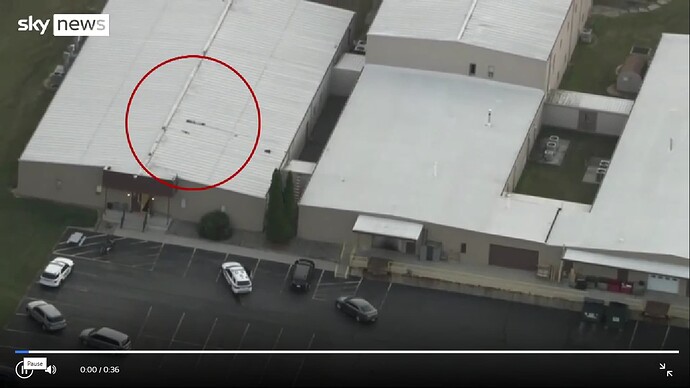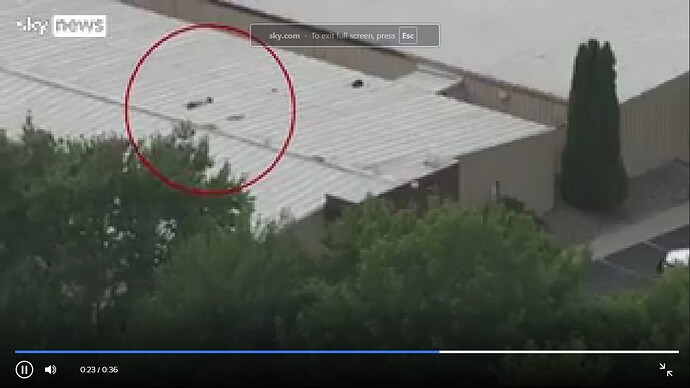For starters, rather than view some YouTube content creator’s cherry-picked image, who has very poor investigative sense, I prefer to go directly to the source for my information. Here is the Sky News video. See for yourself.
Trump shooting: Gunman identified as video shows body and rifle on roof | US News | Sky News
Now you see the blood trail…
Now you don’t.
It’s just a matter of the angle it’s being filmed from.
Added: As for the body remaining on the roof, @sorey addressed that along with the video in this post.

